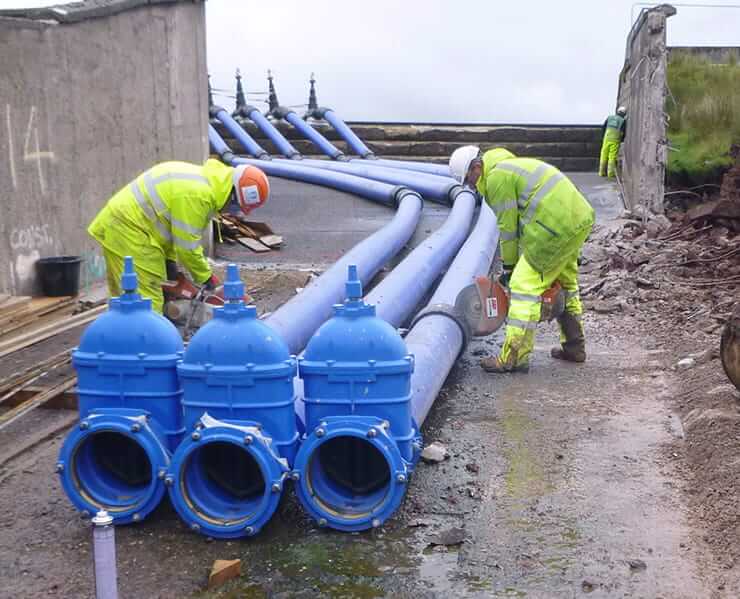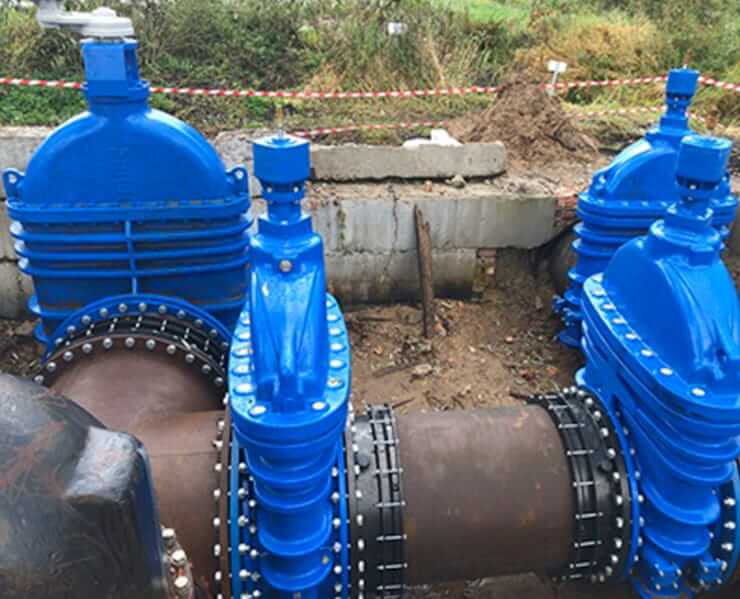Case

Case



Installation and maintenance:
①Handwheel, handle and transmission mechanism are not allowed for lifting, and collision is strictly prohibited.
②Double gate valves should be installed vertically (i.e. the stem is in a vertical position and the handwheel is at the top).
③In use, gate valves are only used for full opening or closing, and partial opening and closing are not allowed to be used to adjust the flow rate to prevent the sealing surface from being easily damaged when the medium flow rate is high.
④The gate valve shall be opened and closed by rotating handwheel and shall not be opened with the aid of other auxiliary levers.
⑤The gate valve should be oiled in the rotating part, and the trapezoidal thread part of the stem should be oiled to lubricate it, which is convenient for rotation and corrosion protection.
⑥Gate valve installation to clean the inner cavity and sealing surface, do not allow dirt attachment.
⑦Check that the connecting bolts are tightened evenly.
⑧Check that the packing is pressed, and ensure that the packing is sealed and does not hinder the stem rotation.


Troubleshooting and elimination methods:
| Common faults | Causes | Exclusion methods |
| Leakage of bodyand bonnet | Damaged valve after heavy impact | Do not pile heavy objects on the valve,do not allow hand hammer impactvalve, large-caliber valve installationshould be supported. |
| Leakage of sealingsurface | Seal surface closure is not strict ordue to the closure of coldshrinkage of the fine seam,resulting in erosion phenomenon. | Strictly follow the direction of the valveopening and closing, for hightemperature valves, after the closure ofthe cold shrinkage of the fine seam,should be closed at a certain intervalafter closing again |
| The valve has reached full closingposition and continues to applyexcessive closing force, includingimproper use of long leveroperation, sealing surface iscrushed, extruded deformation | Valve opening and closing are strictlyregulated | |
| The wear of sealing surface is too large to produce the phenomenonof falling off, that is, the sealingpair can not close well | The sealing surface should be adjustedafter the wire drop, and theunadjustable sealing surface should bereplaced. | |
| Leakage at sealingring connection | Sealing ring connection thread,screw, press ring, loose | Remove screws, press ring cleaning,replace damaged parts, grind seal andjoint face, reassemble. Repair of partswith greater corrosion damage bymeans of welding and bonding |
| Sealing ring connection surfacecorroded | Seal ring connection surface iscorroded, can be ground, bonded,welding method repair, can not berepaired should replace the sealingring | |
| Leakage of foreignbody embeddedbetween sealingsurfaces | The sealing surface of infrequentopening and closing is easy todeposit some dirt | Unusual opening and closing valvesshould be opened and closedfrequently, leaving a fine seam whenclosed, repeated several times, so thatthe sediment on the sealing surface iswashed off by high speed fluid, andthen reduced according to the originalopening and closing state |
| Medium is not clean, containingabrasive, rust, welding slag andother foreign bodies | Before the valve should be equippedwith sewage, filtration and otherdevices, or regularly open and clean,the sealing surface mixed with iron slag and other things, do not forciblyclose, the use of slit method to washaway these foreign bodies, difficult towash away the larger foreign bodies,The cover should be opened andremoved. | |
| Stem operation not flexible | Trapezoidal threads are not cleanand filled with dirt and abrasiveparticles | Stem, stem nut threads are oftencleaned and lubricated, hightemperature valves should be coatedwith molybdenum disulfide orgraphite powder for lubrication. |
| Stem nut loose, trapezoid threadslip | Stem nut loosening should be repairedand replaced | |
| Deformed, worn and damaged stem and related parts | Properly operate valve, close force | |
| Stem dead or closure stuck | For the closed valve parts easy to heatexpansion, the interval should beunloaded once, that is, the handwheelturn a little counterclockwise toprevent stem top death. |